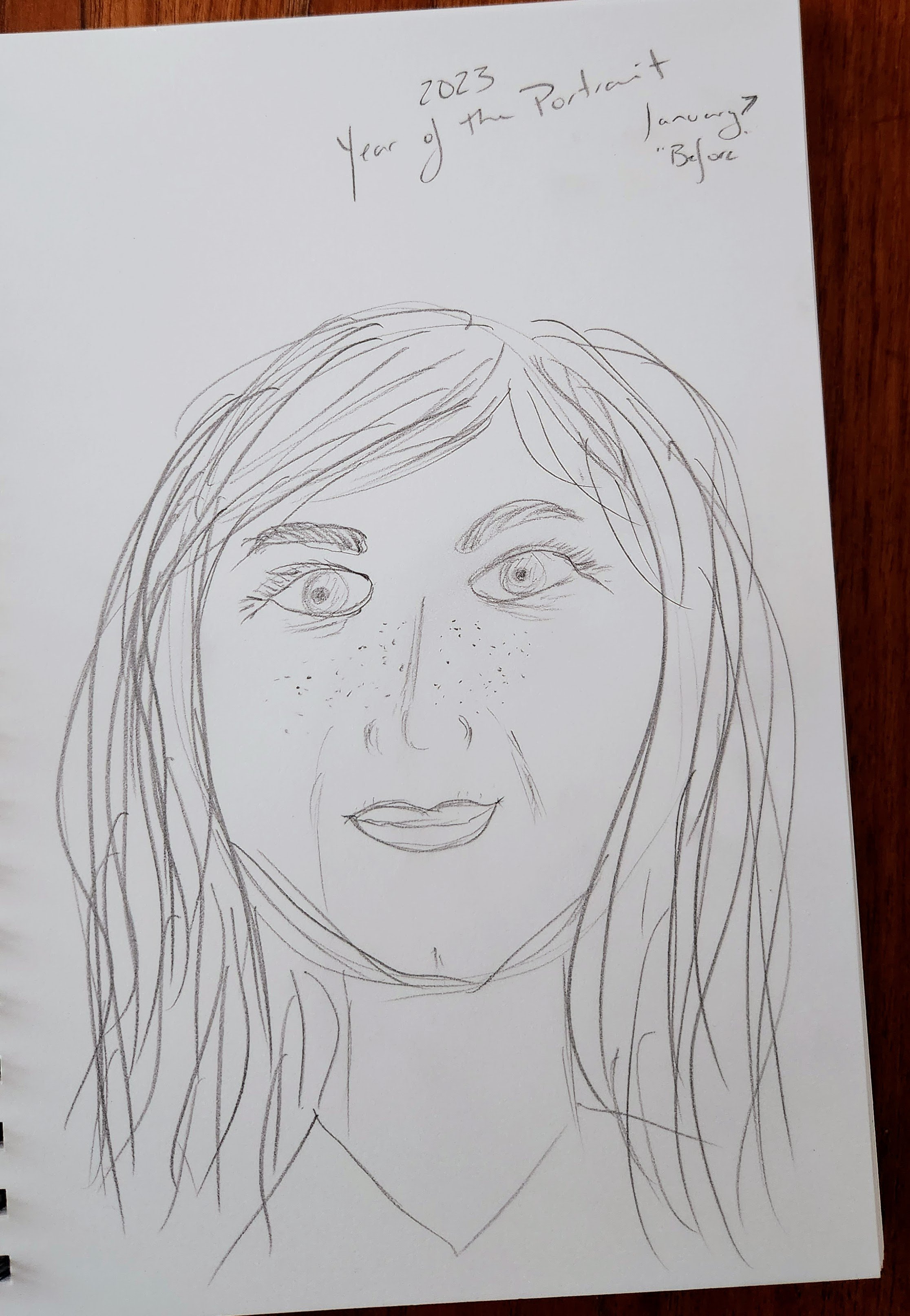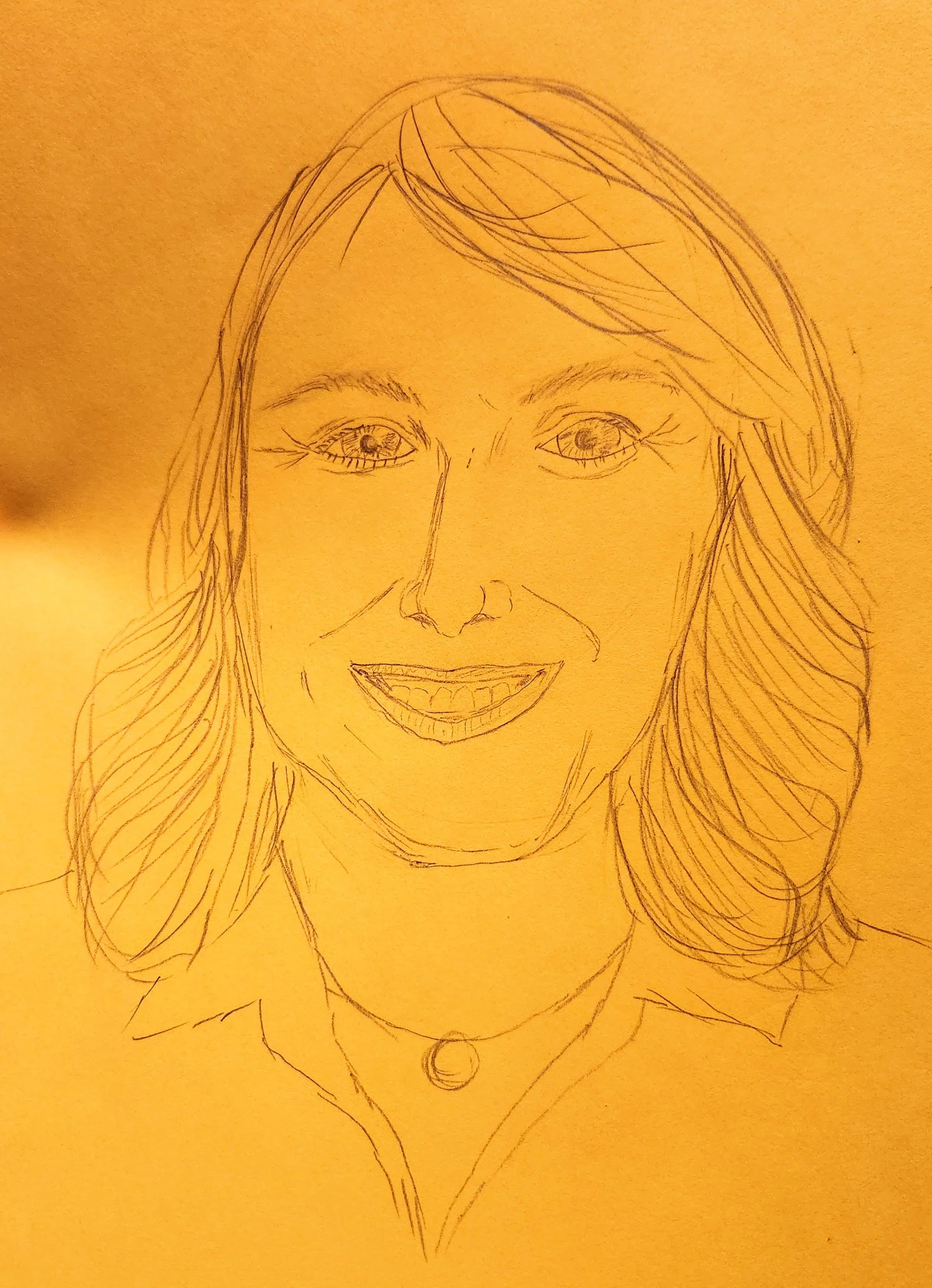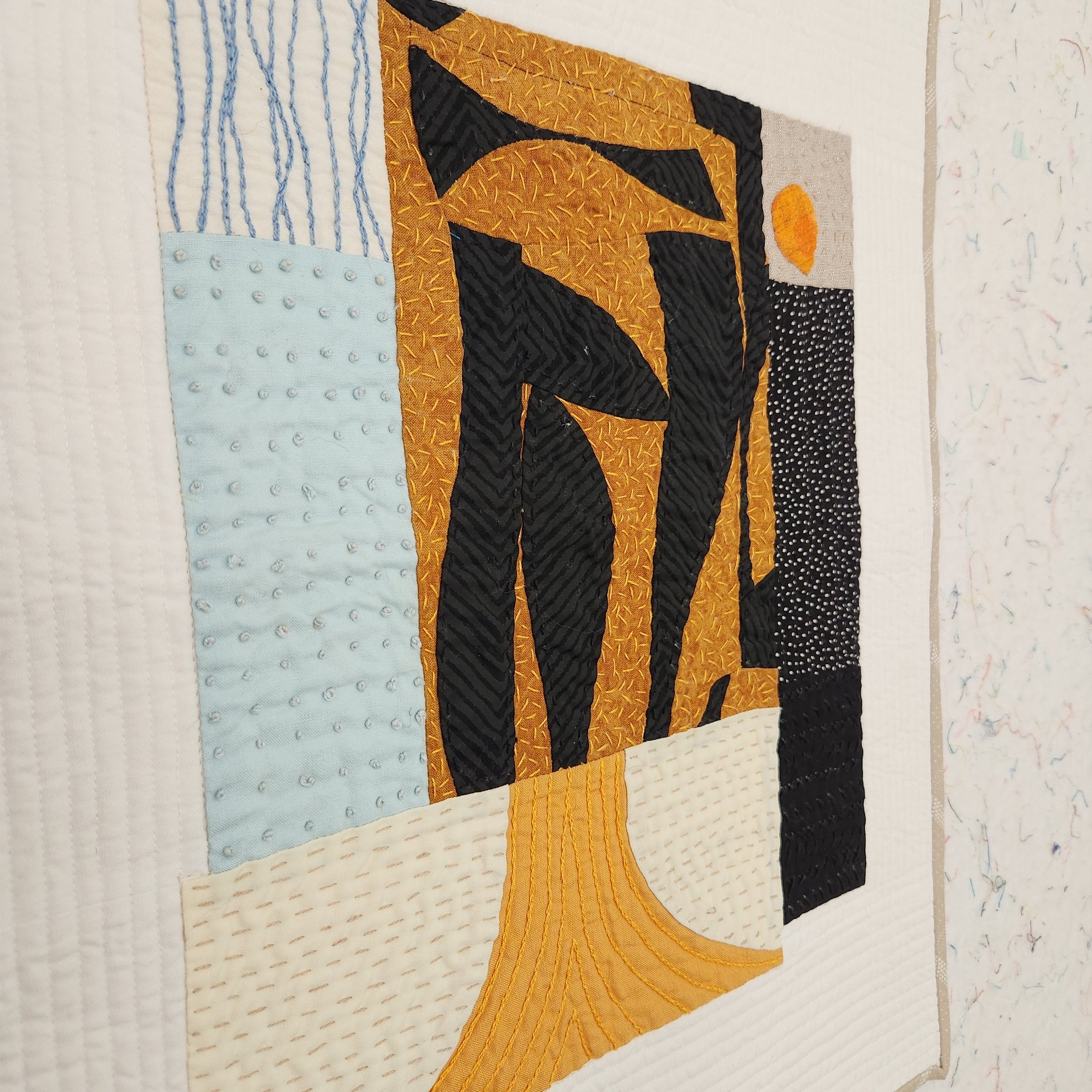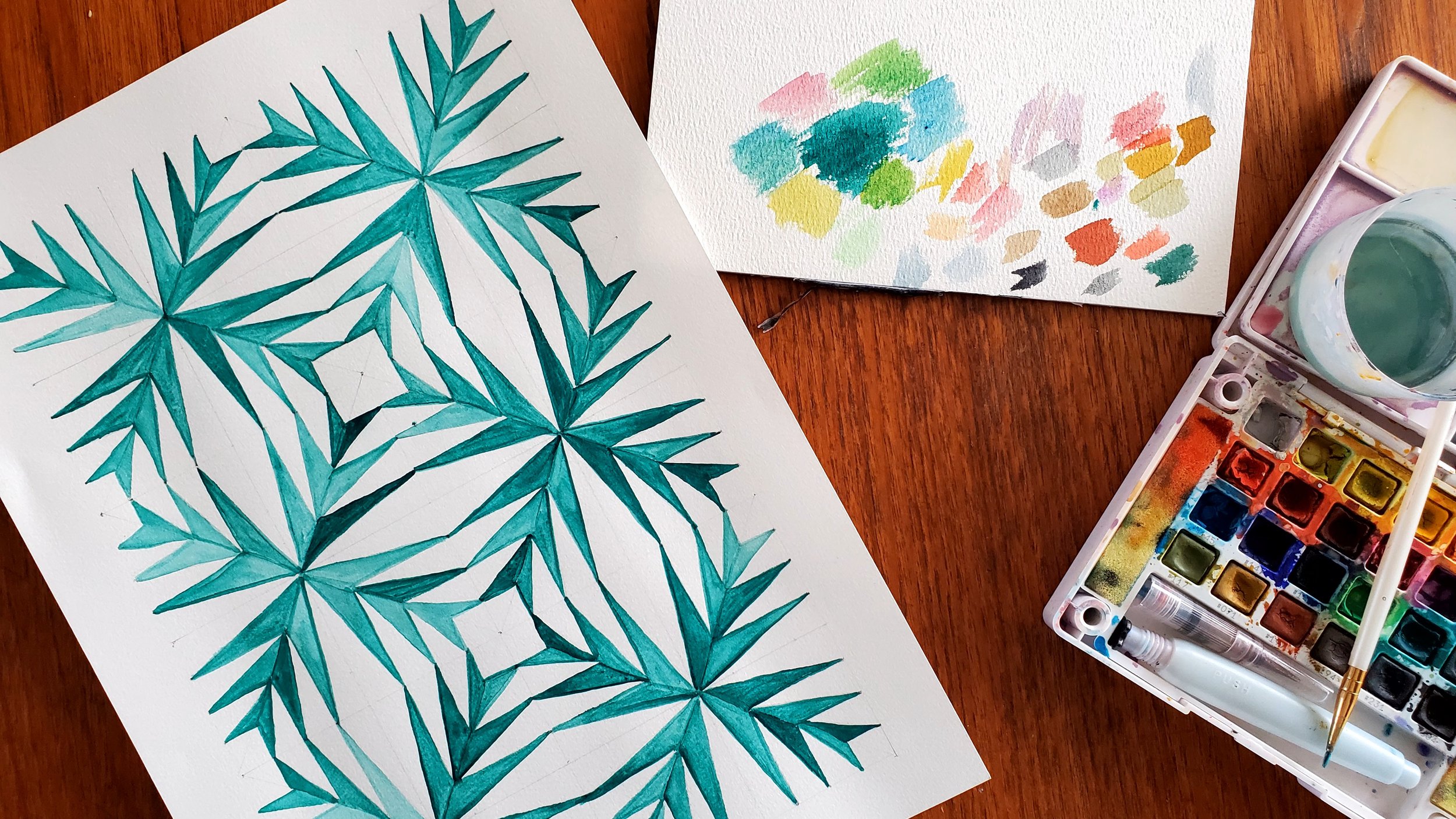In the last months of 2022 I decided that this year would be different when it comes to Morning Make. Rather than switch it up each month, as I’ve done since 2020, I decided to focus. The three years of exploration and play with different and new things were absolutely awesome, but I was ready for a change. More importantly, I was ready for a deep dive. It was easy to pick my focus, there may have been a slight influence from the BBC, but I did have the idea before I became obsessed with a certain show. My 2023 Morning Make focus is portraiture.
Now I will fully admit that I have extremely limited drawing skills. But when I started quilting I had extremely limited quilting skills. You only get better by doing. Of course, there are a lot of ways to tackle learning new skills and drawing is not the only way to do a portrait. It felt, to me, like the most logical place to start. I mean, if you can’t handle how a face comes together with a pencil you aren’t going to know much about how it might work in any other medium.
This is the very first portrait I drew this year. It’s about the same skill level of me in 6th grade. As I said, drawing is not my thing. To learn the basics I went back to one of the teachers I’ve had - Melissa Averinos. In her book and class on Making Faces in Fabric she covers the basics of anatomy and seeing a face, before you get to the fabric part. She suggests drawing a face first, before you’ve learned anything, so you can see how far you grow. So here is my first face.
And then I dove in to the details. Little things like how we all draw the eyes far too high on the face. How to sort of draw a nose. Using lines to show lines. For a few weeks I did nothing but draw. The vast majority of it is very bad. That’s okay, you only get better by doing.
See? In just a few weeks I got much better! I’ve learned that smiles are incredibly hard to draw though. Those teeth! But I like pictures better when I am smiling, so I guess I will have to figure that out.
Once I felt sort of comfortable with the basics I scrolled my selfies and practiced some more. Trying different styles or techniques. Simplifying things, paint, overcomplicating things, playing. I interspersed this with some fabric explorations, how could I not? For now, however, I want to show you the work on paper.
Am I in love with any of these? No, but they are the ones I like. They are the ones that I feel captured a likeness. Sometimes the jaw is wrong or the cheeks too wide or the nose too straight. But they still look like me.
So far I am realizing that I fall into a less is more camp when it comes to drawing. I want to get the likeness and the energy with the fewest amount of lines as possible. Does that mean I won’t try other things? You know I will. I’m a long way from oils or a detailed watercolour and I don’t know if charcoal will make it to my hands, but my confidence is building.
Speaking of confidence, it is a big thing to stare at yourself this much. Taking a selfie you like is one thing, turning that into something else is a whole other thing. It requires you to stare at yourself a lot. A lot. I am so far removed from the insecurities of my youth when it comes to my face, so this isn’t jarring or anything. But it is eye opening. I have more wrinkles than I thought. My dimple is more prominent than I ever pay attention to. My forehead is still very much a fivehead. As part of my recovery from depression I need to love myself more, give myself more compassion. While I realize this whole experimentation had the potential to make me overly critical and, thus, worse, it has had the opposite effect. I’m enjoying noticing the details, I’m appreciating the life in my face. I’m falling in love with myself. I chose self portraits to start simply so no one else had to feel bad at my mediocre skills drawing them, but now I am grateful.



















